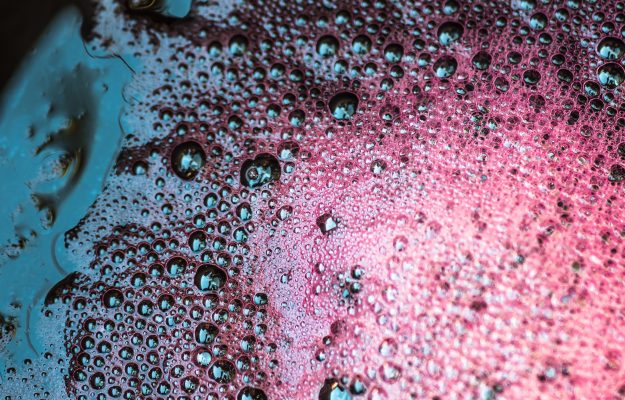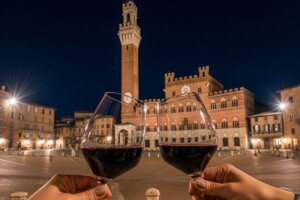Reds, whites and bubbles: rien ne va plus, in the Italian vineyard autumn takes over, and except for sporadic cases between the bare rows only a few leaves, yellow or brown, resist. In the meantime, winemaking has come to an end almost everywhere in the winery, and the balance sheets for this 2019 vintage are becoming less and less blurred and more definitive. In order to have a complete picture as much as possible, which substantially confirms what has been said so far, namely a generally high quality harvest, with episodic atmospheric phenomena that have hit here and there, and a drop in production that brings the quantities back to the average of recent years, at WineNews we let some of the leading companies of the Belpaese Enoico tell the story of the last harvest, for a decidedly positive balance. In South Tyrol, Rudi Kofler, enologist at Cantina Terlano, says “I am very happy, after a long harvest, which began at the beginning of September and ended on October 25. Among the reds there is the Pinot Noir, which is very well presented, has structure but also very important acidity and elegance, but we also expect a lot from Chardonnay and Sauvignon Blanc”.
Staying in South Tyrol, Harald Schraffl, enologist at the Cantina Nals Margreid, makes “a very positive balance, the result of good weather. We recorded a drop of 10%, but also very high quality, with grapes of great complexity and concentration, almost everywhere. Among the varieties, Chardonnay stands out, but we will also have mineral Sauvignon wines and fresh white Pinot wines”. For Alois Lageder, “it was a special year, beautiful from the point of view of acidity, freshness and tension of the wines, especially with regard to Chardonnay and Cabernet, despite a decline in production”. In the nearby Veneto, among the rows of Monte Zovo, as its owner, Diego Cottini, tells us, “the harvest was good, even if scarce, 30% less than last year, with timescales that were back to normal about ten years ago. The Sauvignon is very good, but also Corvina and Rondinella, the Amarone grapes, are in excellent condition”.
In Trentodoc, taking a short trip through the territories of the bubbles that are the symbol of Made in Italy, it was “a rather difficult year and a bit complicated for the weather”, says Antonio Stelzer, head of the Maso Martis label, “but we solved it with experience, putting excellent bases in the cellar, especially Chardonnay, ready for long refining, but with a decrease of 25-30% in terms of quantity”. In the heart of Prosecco Superiore, among the rows of Valdobbiadene, Franco Adami had to deal with “the hailstorm of April 26, which struck Corbeltando, Vidor, Miane, Combai, an area of about 800 hectares where we lost more than half of production. The rest of the territory, thanks to a year that has seen adequate rainfall and sunshine, has given extraordinary grapes from the point of view of analysis, and with a production 12-15% lower than normal, but we expect a great vintage”. Still on the subject of bubbles, those of Franciacorta, seen from the Bellavista winery (Terra Moretti Group), speak, in Francesca Moretti’s comment, of “a very interesting harvest, not in quantity but of the highest quality, perhaps the best in the last three years. In Sardinia - where the Terra Moretti Group controls the historic brand Sella & Mosca - great quality, the weather was good, with lots of rain in the spring. Quantity penalized by the frosts, but good vintage, especially for the Torbato: it was a fantastic year, we are convinced that it will be the vine of the future for Sardinia”.
In Piedmont, for Angelo Negro, enologist of the historic and homonymous company of Roero, it was a “poor harvest in quantity, but with very structured and complex Nebbiolo”, while for Isidoro Vaira, enologist of the brand of Barolo Vajra, it was “a harvest as challenging as all the harvests. The forecasts were for rainfall that didn’t come, fortunately. Nebbiolo at the top, thanks to cold nights and warm days, which gave us really beautiful grapes”. Remaining in Piedmont, the red grape variety that is the symbol of Bricco dei Guazzi (Genagricola Group) is Albarossa, from which the enologist Giovanni Casati has “great expectations, after a long maturation, as was the case once, which already gives complex scents”. In Liguria, Diego Bosoni, at the head of Cantine Lunae, speaks of “a very beautiful vintage, of great quality on the Colli di Luni, a little less quantity due to the cold of May, but from a quality point of view it was a great harvest, with excellent results especially for Vermentino”.
In Abruzzo, Giovanni Salerno, at the head of Cantina Orsogna, speaks of a “drop in production of 20%”, but also of a “great quality of the grapes, thanks to the heat that has stopped diseases and fungi, with Pecorino and Montepulciano that have given great results in terms of quality of the grapes”. In the Marches, Moncaro, a cooperative present in all the top territories of the Region, has an overall vision well summarized by the words of the enologist Giuliano d'Ignazi: “we experienced a heterogeneous harvest, in the Piceno we had a certain water shortage, in the Central North abundance of rains between September and October, then major temperature ranges, which have maintained good acidity and aromas. In the less sunny areas, Montepulciano ripened late, but it gave balanced wines”. Not far away, Andrea Ricci, enologist of Velenosi, a Piceno label led by Angela Velenosi, speaks of a “beautiful vintage, both for whites and reds. Montepulciano has given satisfaction, which will be discovered with the evolution of our wines, which will be of great personality”. In nearby Umbria, Massimo D'Alema, winemaker with Cantina Madeleine, speaks of a “drop in production compared to 2018, but the quality remains good, especially for Pinot Noir. The harvest is now like a lottery, with the climatic uncertainty, the hail that perhaps at 500 meters hits irremediably, but we’re happy, especially for the quality, which will give us wines of excellence”. In Campania, Silvia Imparato, at the helm of Montevetrano, in the Salerno area, says that “for us who grow Aglianico, Cabernet Sauvignon and Merlot it went well, we expected terrible difficulties, because it was a bizarre season, but then with the harvest everything was regularized. We will have less wine, but for the moment I can talk about product excellence, not as a habit, it is objectively so. It is very interesting to see how difficult vintages emerge over time”.
To close the circle of this enological journey, the words and the balance of the president of Assoenologi, Riccardo Cotarella. “From a quantitative point of view we have returned almost to the normality of a season like 2016, we have lost 16 to 20% of production, in a few days we will leave with the final data. From a quality point of view, it's not very professional and it's approximate to define a vintage, sometimes we can't define it even within a company. When the climate is so different, we only have one way to try to mitigate its effects. That is, to intervene scientifically in the vineyard. The approximation was not good 20 years ago, today it is forbidden. So if we know how to exploit, to know well the climate change, the behavior and the approach of the vine to the climate, we can also obtain positive results due to the climate. I believe we have never made great wines, as in the last 20 years. What were once exceptions are now a rule. All great red wines are great wines, but also white wines, you need to know how to intervene well in the vineyard, and hope that this uncertainty will find its stability”.
Copyright © 2000/2026
Contatti: info@winenews.it
Seguici anche su Twitter: @WineNewsIt
Seguici anche su Facebook: @winenewsit
Questo articolo è tratto dall'archivio di WineNews - Tutti i diritti riservati - Copyright © 2000/2026









































































































































































































